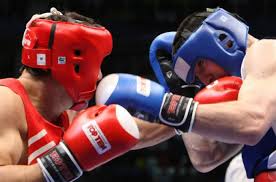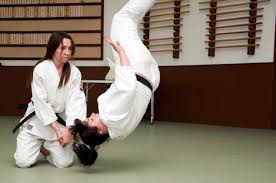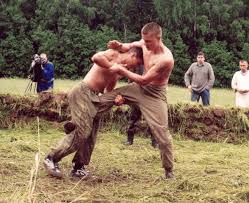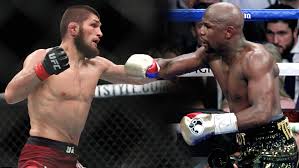BOXING (part 1)
 BOXING (eng. “Boxing”, from “box” – “beat with a fist, box”), a kind of martial arts, fisticuffs according to certain rules on a special platform (ring). Compliance with the rules monitors the judge in the ring – the referee. The fights are in full contact. Boxers perform in special gloves; protective equipment is also used to minimize injuries. The course of the fight is necessarily observed by a doctor.Boxing is one of the oldest sports. Currently the most popular martial art in the world. It develops in two directions: as an amateur and as a professional boxing. The differences between them are in the rules of the competition, the formula of battles, the equipment of athletes, etc. Boxing is included in the Olympic program. In the late 20th – early 21st centuries. Women’s boxing was also widespread.
BOXING (eng. “Boxing”, from “box” – “beat with a fist, box”), a kind of martial arts, fisticuffs according to certain rules on a special platform (ring). Compliance with the rules monitors the judge in the ring – the referee. The fights are in full contact. Boxers perform in special gloves; protective equipment is also used to minimize injuries. The course of the fight is necessarily observed by a doctor.Boxing is one of the oldest sports. Currently the most popular martial art in the world. It develops in two directions: as an amateur and as a professional boxing. The differences between them are in the rules of the competition, the formula of battles, the equipment of athletes, etc. Boxing is included in the Olympic program. In the late 20th – early 21st centuries. Women’s boxing was also widespread.
Regular boxing exercises develop strength, endurance, reaction, and coordination of movements.
RULES OF BOXING.
Even in those distant times, when there was only one rule in fist martial arts: “all tricks are allowed,” in each case, rivals entered into a kind of gentlemen’s contract for a single match. These could be restrictions on the time of the battle, the number of “rounds” used in the duel technique, etc. The first rules of boxing fights appeared in the 18th century.
Currently, there are unified rules for amateur boxers approved by AIBA (International Amateur Boxing Association) and the IOC. Competitions of professional boxers are held under the auspices of several international organizations, the largest and most authoritative of which are the International Boxing Federation (IBF), the World Boxing Council (WBC) and the World Boxing Association (WBA). The absolute world champion in his weight category is considered to be the one who owns the champion title according to the versions of all three organizations. Each of them has its own rules, slightly different from each other.
ORDER OF COMPETITION.
Amateur tournaments are held according to the Olympic system – to “drop out”. In the final, two boxers challenge the first place. Two who did not qualify for the finals receive bronze medals: currently, battles for third place are not held. This is a single competition formula for tournaments of all levels. According to the new rules introduced in the mid-1990s, the fight among amateur boxers lasts 4 rounds of 2 minutes with a break of one minute between them (before, the formula was 3 rounds of 3 minutes each).
In professional boxing, a system of so-called ratings has been adopted. All fights that the athlete had, his victories and defeats are taken into account, it is noted how many victories were won by knockout, on points, etc. The relevant results are entered in the summary rating list. The boxer, who occupies the first place in it, is declared a contender for the title of world champion and disputes this title in a fight with the current champion. (The champion himself does not participate in rating fights, but can hold “friendly” meetings that do not qualify for the rating, as well as matches with champions in the same weight category according to versions of other boxing organizations.) In case of defeat of the current champion, a match is often appointed revenge. Usually a champion fight takes place according to the formula of 12 rounds of 3 minutes with minute breaks between rounds. The first duel in the professional ring – regardless of the experience of amateur fights – the athlete must spend the formula 4 rounds of 3 minutes. Rating fights usually consist of 6 or 8 rounds.




